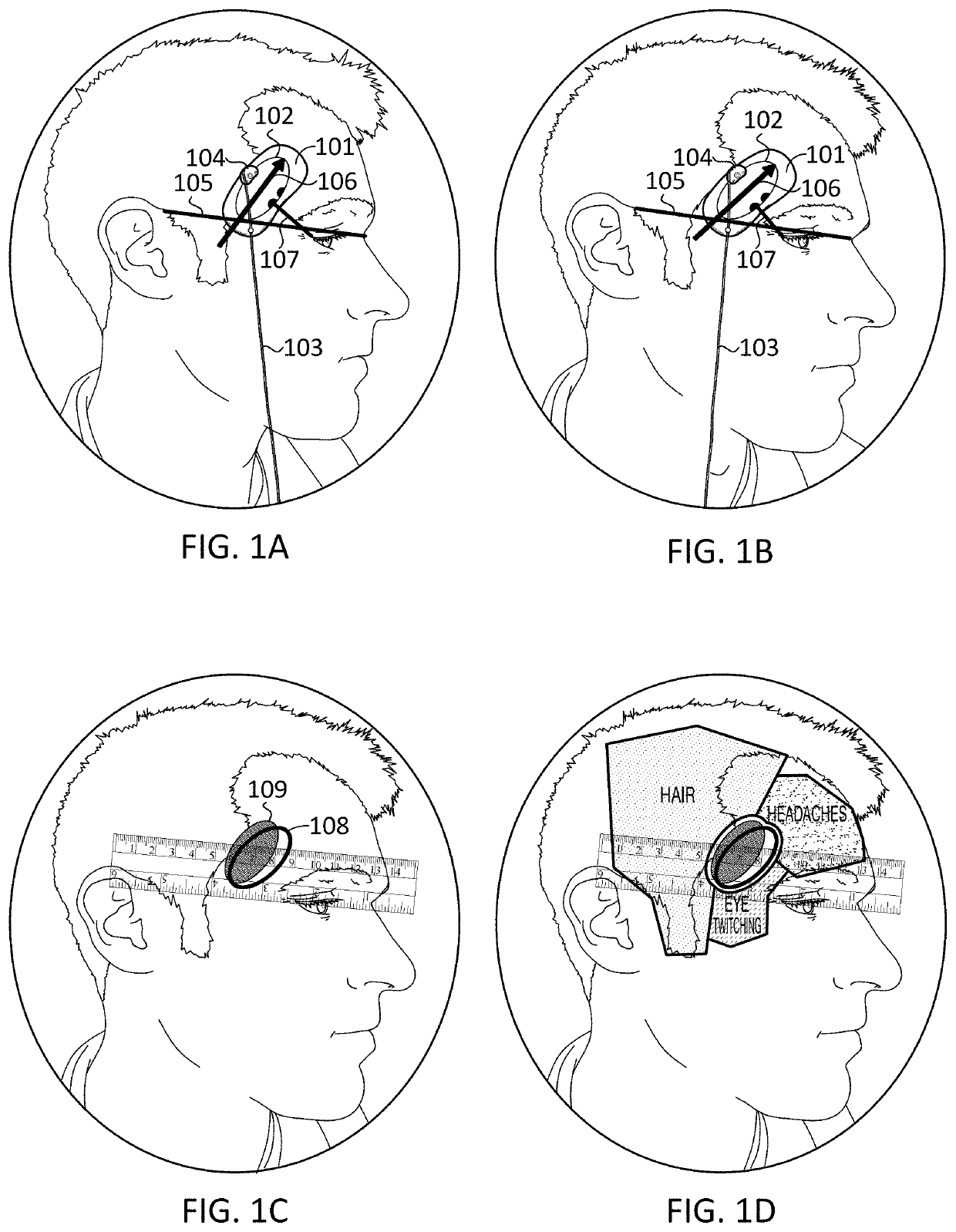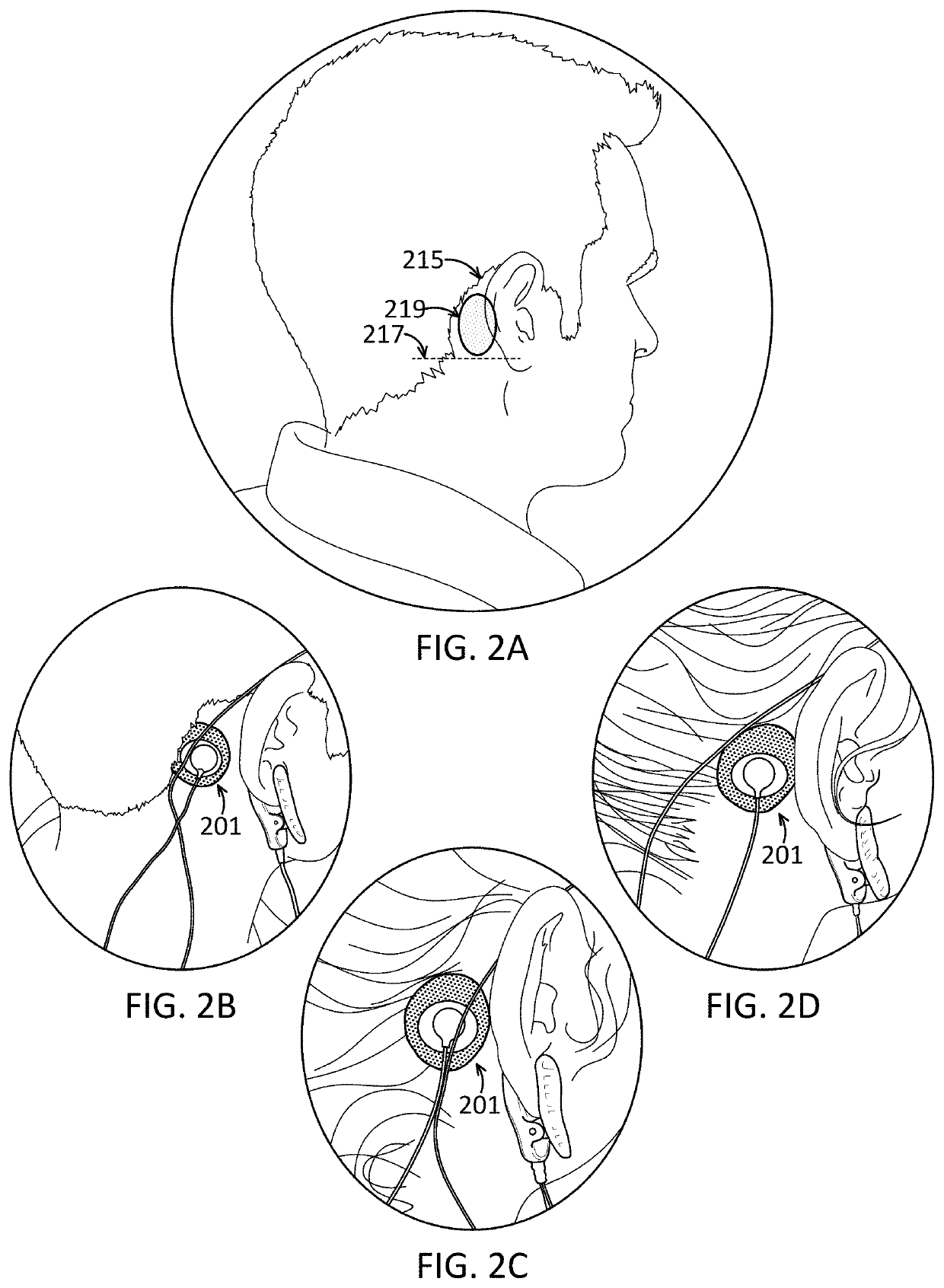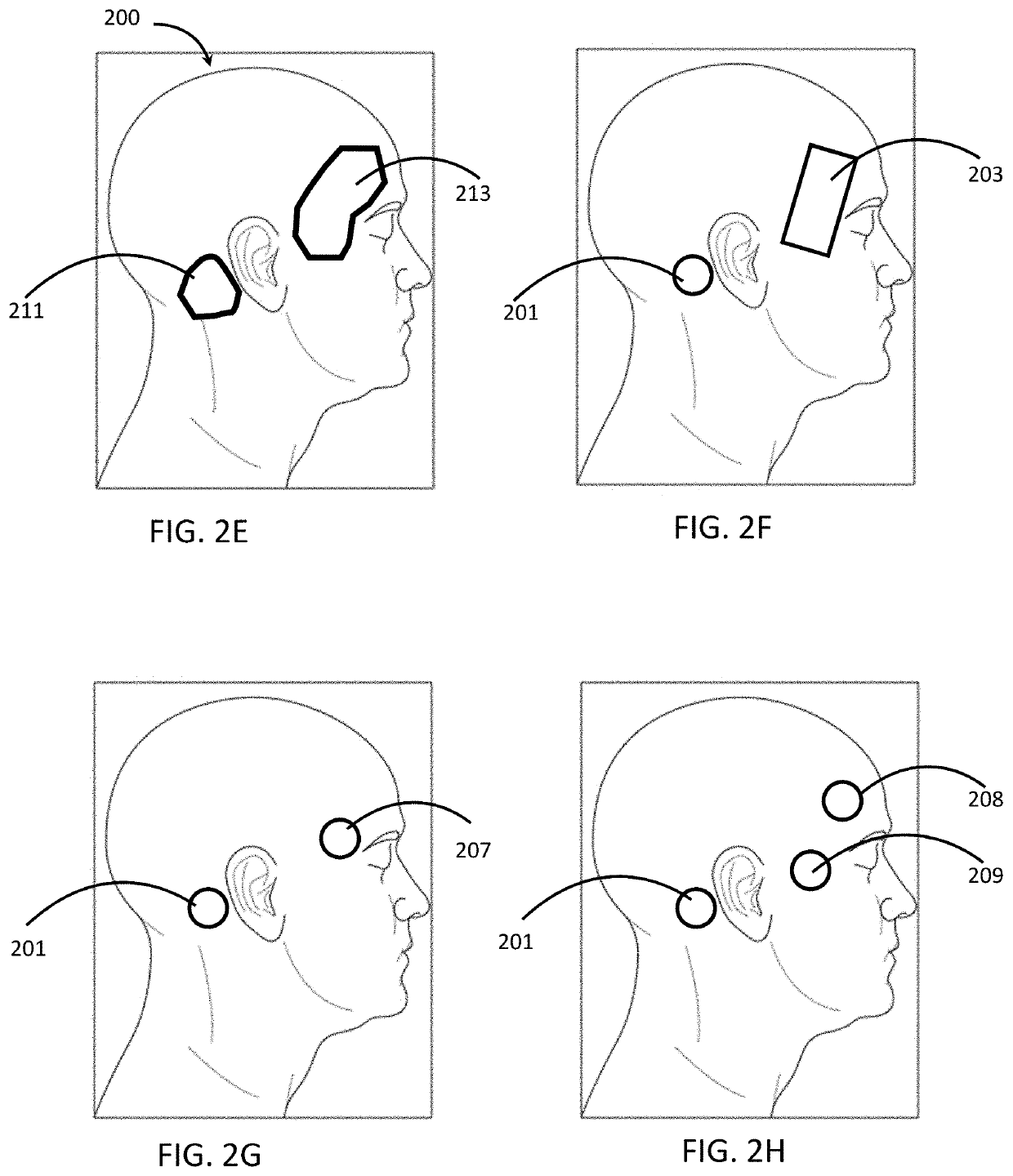Apparatuses and methods for transdermal electrical stimulation of nerves to modify or induce a cognitive state
a technology apparatus, applied in the field of transdermal electrical stimulation, can solve the problems of existing systems and methods, inability to meet the needs of tes, cognitive state, perception, etc., and achieve the effects of enhancing the cognitive effect and/or perception of the cognitive effect, reducing habituation, and fast transitions
- Summary
- Abstract
- Description
- Claims
- Application Information
AI Technical Summary
Benefits of technology
Problems solved by technology
Method used
Image
Examples
Embodiment Construction
[0153]Described herein are transdermal electrical stimulation (TES) methods and apparatuses, including devices and systems, such as TES applicators for modifying a subject's cognitive state. In general, these applicators and methods for TES may induce neuromodulation with electrical stimulation delivered to a human subject to induce a beneficial or desired change in cognitive function and / or cognitive state. Other examples of devices and methods for transdermal electrical stimulation (including transcranial electrical stimulation) are described in U.S. patent application Ser. No. 14 / 091,121, now U.S. Pat. No. 8,903,494, by named inventors of this application titled “WEARABLE TRANSDERMAL ELECTRICAL STIMULATION DEVICES AND METHODS OF USING THEM” and is herein incorporated by reference in its entirely herein.
[0154]In general, described herein are general TES waveforms parameters that may be used to invoke, enhance, or modify a variety of cognitive states. Although the apparatuses and m...
PUM
 Login to view more
Login to view more Abstract
Description
Claims
Application Information
 Login to view more
Login to view more - R&D Engineer
- R&D Manager
- IP Professional
- Industry Leading Data Capabilities
- Powerful AI technology
- Patent DNA Extraction
Browse by: Latest US Patents, China's latest patents, Technical Efficacy Thesaurus, Application Domain, Technology Topic.
© 2024 PatSnap. All rights reserved.Legal|Privacy policy|Modern Slavery Act Transparency Statement|Sitemap



